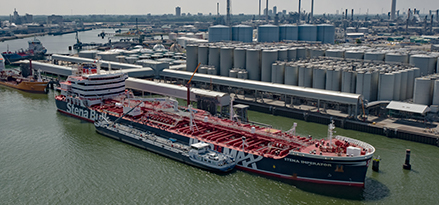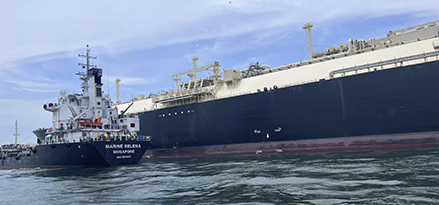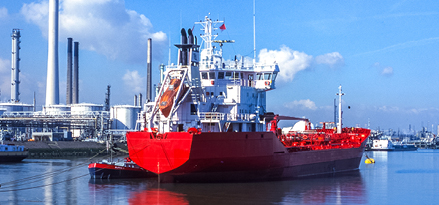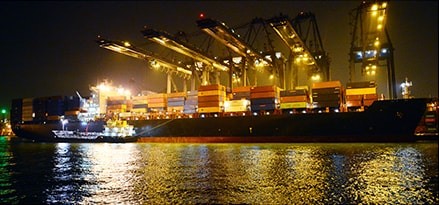
ExxonMobil Bio Marine Fuel Blends
A drop-in lower Lifecycle GHG emission fuel alternative
ExxonMobil continues to develop innovative technologies designed to help support the International Maritime Organization’s (IMO) ambitions to reduce total lifecycle greenhouse gas (GHG) emissions from international shipping by or around 2050.1 A number of fuel options will likely be required, and vessel operators will need to assess the alternatives based on individual requirements and operational profiles.
Available today, our bio marine fuel blends are drop-in options2 that can help reduce lifecycle GHG emissions compared with conventional marine fuel. 3 Their use requires minimal changes to bunkering and operational procedures, including handling, storage and compatibility, while offering a similar performance to conventional fuel formulations.4
Investing in a lower GHG emissions future
ExxonMobil is pursuing up to $30 billion in lower-emission investment opportunities from 2025 through 2030 with almost 65% spent on reducing emissions for third-party customers, including lower-emission fuel initiatives.5
Our bio marine fuel blends are a combination of residual or distillate fuels with a Fatty Acid Methyl Esters (FAME) bio component. They meet ISO 8217:2017 (except the FAME component, which meets EN14214). ExxonMobil’s bio marine fuel blends also comply with the IMO’s 2020 sulphur cap.
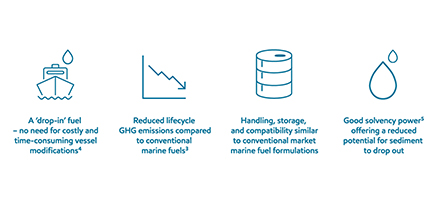
Subject to regional availability, ExxonMobil offers a range of bio marine fuel blends (Bio VLSFO, Bio ULSFO, Bio MGO and Bio HSFO), which we have supplied into the ARA (Amsterdam-Rotterdam-Antwerp) region (VLSFO and USLFO), the UK (MGO and HSFO) and Singapore (VLSFO).
Leveraging our knowledge and expertise
The level of lifecycle GHG emissions reduction can vary and depends on factors such as the feedstock characteristics and production processes. Our fuels development work is supported by a pioneering test engine at the Oak Ridge National Laboratory in Tennessee, which builds upon ExxonMobil’s marine fuels knowledge and expertise.
Please consult your sales contact or use ‘Contact us’ for more details.
1 https://www.imo.org/en/MediaCentre/HotTopics/Pages/Cutting-GHG-emissions.aspx
2,4 Consult with engine manufacturer. OEMs may limit bio blend percentages or specific bio components for certain engines.
3 Benefit compared with conventional petroleum-based liquid marine fuels, calculated on an energy basis. Well-to-wake GHG emissions reduction based on the default value data published in Annex V of Directive 2018/2001/EU of the European Parliament and in Annex II of the European Council ReFuel EU Maritime approach. Actual results may vary based on factors such as the specific feedstock and production process.
5 Corporate_Plan_Update_and_Upstream_Spotlight_Press_Release_Final.pdf
Explore success stories

Lowering emissions in shipping
Marine fuel used in the global shipment of goods in undergoing a tremendous change. In helping to facilitate that change, ExxonMobil has engineered breakthrough lower-emissions fuels like the EMF.5™ that are helping meet the lnternaoonal Marine Organization's environmental standards.
Learn more